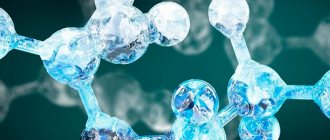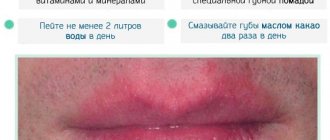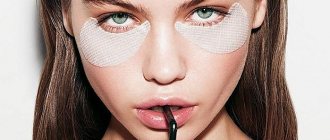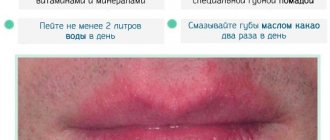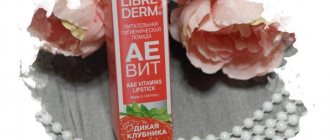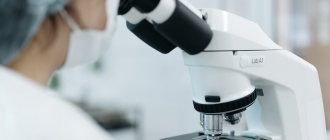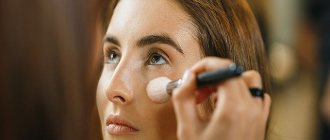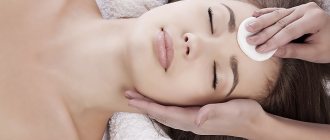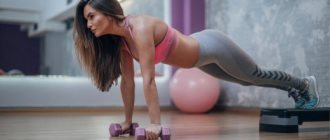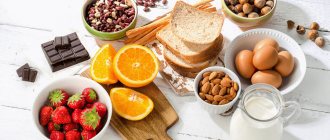Dry and cracked heels are a common skin defect. Occurs more often during hot periods, less often in winter. Diseases are also causes. Cracks not only worsen the appearance, but also provoke unpleasant pain. Creams will help to cope with this problem; they perfectly nourish, moisturize the skin and promote its regeneration.
When to use
It is necessary to use cosmetics and medications against dry and cracked heels if the following symptoms are observed:
- Severe dry skin. With this type of dermis, the heels are more susceptible to the development of corns, cracks and infection.
- Thickening of the epidermis. Hyperkeratosis is most often accompanied by skin wounds.
- Pain in the feet when walking.
- Burning and severe itching.
- Unpleasant smell.
- Bleeding.
If you have one or more of the above signs, you should use anti-crack cream.
Why does eczema become chronic?
Chronic eczema develops if the acute stage of the disease is not treated for a long time. Another reason is the constant influence of allergens on a person. Because of this, the acute form cannot be treated and becomes chronic. This is caused by allergens that enter the body through the respiratory system, digestive system, as well as contact allergens that negatively affect the skin. Chronic inflammation is also supported by:
- long contact with water, especially hot;
- chronic bacterial, fungal infections;
- constant stress, emotional stress and lack of sleep;
- exposure of the skin to hot, dry or cold air.
These are the main causes of chronic eczema. In addition, a relapsing course is characteristic of a number of specific forms of the disease:
- Dyshidrotic eczema. The disease is characterized by seasonal exacerbation, i.e., an increase in symptoms with the change of two contrasting seasons - hot summer and cold winter.
- Nummular eczema. It can be recognized by rashes that resemble coins in shape. Without treatment, the disease lasts for weeks and months, worsening over time. And even after treatment, the disease can easily return, that is, the patient again experiences exacerbations.
- Varicose eczema. Occurs with chronic insufficiency of the veins of the legs, in which blood circulation slows down. Eczema occurs in 2.7-10% of patients with this diagnosis. The disease has a chronic, relapsing course and a tendency to progress.
- Seborrheic eczema. Another chronic form, caused by improper functioning of the sebaceous glands. Because of this, pink itchy spots appear on the scalp, forehead and wings of the nose.
What must be present in the cream
Important components of care products for eliminating severe dryness and cracked heels are:
- Essential oils of shea, jojoba, coconut and lavender. Nourish and moisturize the skin.
- Salicylic acid and urea. Prevents the development of corns, calluses and cracks.
- Propolis. Forms a protective film, preventing moisture loss and exposure to adverse environmental factors.
- Aloe, keratin, calendula extract. Accelerate the regeneration of the epidermis.
- Betaine. Moisturizes and softens the skin, eliminating hyperemia and other signs of irritation.
- Vitamin complexes.
- Panthenol. Deeply nourishes all layers of the dermis, increases the degree of its regeneration.
- Glycerin. Restores water balance, heals cuts, cracks and effectively moisturizes the skin.
Cosmetics for moisturizing feet
Before we begin to review the drugs, we will highlight the main components that are present in the composition and help eliminate dry feet and heels. The most common:
- Glycerin or lanolin are moisturizing components that, after absorption, leave a thin film on the surface of the foot. The film prevents moisture loss, which makes the skin soft and elastic;
- Oils. Natural oils in the composition help nourish the skin with beneficial substances, and also soften and moisturize. Oils common in creams: shea, lavender, grape seed, jojoba, olive;
- Panthenol . It is also provitamin B5, it starts the regeneration process and moisturizes in the deep layers;
- Urea not only saturates the feet with moisture, but also promotes the renewal of epidermal cells;
- Hyaluronic acid – increases skin elasticity and retains moisture.
Cosmetics manufacturers also use other moisturizing ingredients, such as beeswax, but they are not yet widespread and are rare.
Milv, Urea Foot Cream
The cream contains urea at a concentration of 10 percent. The product has a light, barely noticeable keratolytic effect, while effectively moisturizing. Available in 200 ml packaging equipped with a pump dispenser.
The cost of the product ranges from 190 to 250 rubles.
Glysolid, Skin Balm
Instant action drug. Visible effect after the first use of the balm. The product is made on the basis of glycerin. Available in small packages - 30 ml. The cost per tube is 70 rubles.
Aravia Professional, Foot Cream Active Cream
The professional brand Arabia cream copes with even advanced cases of dryness. The composition includes several useful components - hyaluronic acid, shea butter, panthenol.
The brand also presents Super Moisture accelerated action super moisturizing cream, which gives the first effect after the first application. Consists of glycerin, several oils and urea. Suitable for daily use to prevent the appearance of cracks and corns.
Farmona, Nourishing foot cream Podologic Lipid System
Farmona is a manufacturer of professional pedicure cosmetics and offers consumers high-quality products with a rich composition. The nourishing cream includes several types of oils - almond, canola, macadamia, rosemary and pine, urea, vitamins B and E.
It is recommended to use the product only on problem areas, since the percentage of urea is high - 30%.
A 500 ml package with a pump will cost RUB 2,000.
The Farmona brand also offers a cream with 10% urea, lavender oil and vitamin E. This product is suitable for daily use. Cost – 1990 rub.
Professional cosmetics for manicure and pedicure Farmona - review of products
Gehwol, Hydro-balance
Intensively moisturizing cream copes with severe dryness and flaking. After the first use, the skin is noticeably transformed. Suitable for daily use, but works especially effectively in tandem with a foot bath.
Made from two oils – sea buckthorn and avocado. The price of the product is 1350 rub. for 125 ml.
Gehwol products for solving foot skin problems
Levrana, Polar Birch Foot Cream
Levrana is a manufacturer of natural cosmetics, which are based on ingredients only of natural origin. Polar Birch cream includes glycerin, as well as such a common component as camelina oil.
Camelina oil is obtained not from mushrooms, but from the seeds of the plant. It is used in cosmetics as it contains 60% fatty acids. Unlike other oils, camelina oil penetrates into the deep layers and moisturizes the epidermis from the inside.
Price for 50 ml – 350 rub.
PNB, Moisturizing Foot Cream
Cream based on panthenol and jojoba oil. It has a slight cooling effect, so it is recommended for people with excessive sweating. Suitable for daily use.
Price per package 550 ml – 500 rub.
Natura Botanica, All Purpose Foot Balm
A universal balm suitable for the care of extremely dry feet. Made with beeswax and grape seed and almond oils. Allowed for use in the presence of wounds and cracks and promotes their rapid healing.
A 50 g package costs about 500 rubles. The product is used sparingly - the package is enough for 50 applications.
DNC, Cream concentrate, foot wax
The concentrated product is based on beeswax and essential oils - eucalyptus, mint, rosemary, lemon, cocoa. Has a slight cooling effect, effectively moisturizes and softens.
There is 80 ml of product in a metal package and its cost varies from 200 to 400 rubles.
Marutaka-Foot, Callus Peel Cream
The cream is intended to complete the pedicure procedure and is used after peeling or bathing. Soothes the skin, softens and has healing properties. It has a cumulative effect and allows you to maintain the smoothness and elasticity of your feet for up to 4 weeks.
Made from glycerin with the addition of lavender oil and vitamin E.
100 ml in different stores costs from 800 to 100 rubles.
Banna “Nature Organic” foot balm with banana against dryness and cracks
An effective moisturizing balm with urea and banana extract. Restores the elasticity and firmness of the skin, has a healing effect and prevents the appearance of cracks.
Available in a small package of 25 g at a price of about 200 rubles.
NATURA SIBERICA, Nourishing foot cream
A product for daily foot care based on amaranth oil and barberry. In addition to a pronounced moisturizing effect, it promotes the healing of wounds and cracks, and also relieves the feeling of fatigue. A 75 ml package costs about 250 rubles.
Agafya's recipes, Sea buckthorn cream-vitamin for feet
A preparation with a pronounced sea buckthorn aroma for daily nutrition of dry feet. In addition to sea buckthorn berry oil, the preparation also includes fresh carrot juice and glycerin. Quite a budget product - the price does not exceed 100 rubles.
Organic Life Dermocosmetics, Moisturizing Foot Cream
The cream consists of 20% natural ingredients and is also enriched with vitamins E, B5 and A. Intensively moisturizes the epidermis, smoothes and softens. Produced in Poland. Suitable for daily use.
Price – about 500 rub.
Kapous, Hydro-balance foot cream
It has a moisturizing and nourishing effect and is suitable for the care of very dry skin. The composition includes natural ingredients - urea, avocado oil and seaweed. In addition to its main function, the cream has a deodorizing, soothing and wound-healing effect.
Tube 150 ml – 450 rub.
Now you know what products to pay attention to for dry feet.
Combine moisturizing with steaming and exfoliation to get rid of the problem and return your legs to a well-groomed appearance. Tell us in the comments which cream from the selection you like best. Comment
How to choose the right cream
When purchasing a medicinal or cosmetic product to combat wounds and dry skin on the heels, you must take into account some criteria:
- Therapeutic property. Preference should be given to creams that have regenerative, softening, protective and nourishing effects.
- Hypoallergenic and natural composition. It is advisable to buy products based on natural ingredients.
- Expiration date.
- Method of application. You should read the attached instructions for the product. The application of certain types of creams requires some processing of the skin for the best therapeutic effect.
Features of the course of chronic eczema and differences from acute
We can talk about the process being chronic if the symptoms that first appeared did not go away within 2 months. Chronic eczema, unlike acute eczema, occurs in 2 stages, such as exacerbation and remission, which replace each other. Relapses usually occur in the cold season, but improvement can be noticed in the warm season. In addition to low temperature, exacerbation can be triggered by:
- increased sweating;
- contact with allergens, such as pollen;
- stress and anxiety;
- weakened immunity;
- taking certain medications;
- consumption of allergenic foods.
In the chronic stage of eczema, there is always a rash and itching. Moreover, itching usually precedes the appearance of rashes and can be used to determine that an exacerbation will soon occur. With chronic eczema, there are more dry crusts on the skin than weeping rashes, which is why this form of the disease is sometimes called dry. The crusts crack and itch very much, causing discomfort and even insomnia.
With exacerbation, the signs of chronic eczema intensify. New weeping rashes appear next to the dry crusts, but less exudate comes out of them than in the acute form. Other characteristic symptoms include:
- severe peeling of the skin;
- violation of skin pigmentation, development of pigment spots;
- pronounced linear pattern on the skin;
- excessive compaction and hardening of the rash;
- scratches and cracks in areas of thickening.
Chronic eczema in remission is manifested by constant peeling of the lesions. The skin in these places scars, so it becomes dense, and can acquire a blue-red tint in dark-skinned people and pale pink or beige in light-skinned people.
The most effective remedies against dry and cracked heels
Among cosmetic and medicinal products, there is a huge selection of products to combat increased heel dryness and cracking. The best are:
- Vaseline.
- Ciel Parfum.
- Gehwol Med.
- Dexeryl.
- TianDe.
- Calendula ointment.
These products have a unique composition and effectively treat cracked heels, softening and moisturizing the skin of the feet.
Causes and consequences of dry feet
Dry feet are not only a discomfort, but also a cause of cracks.
To avoid having to treat skin breaks later, make sure that the following factors do not affect your legs:
- Open shoes . When the foot is not protected from external influences, it takes on dust and the rays of the sun;
- Standing work . Your feet get the most stress when you have to stand all day. As a result of standing for a long time, blood circulation is impaired, which results in a problem in the form of dryness;
- Wrong shoes . Shoes should be selected to fit, and also made from natural materials so that the feet can “breathe”;
- Clinical conditions . Sometimes dry feet are caused by medical conditions. Diabetes mellitus, deficiency or excess of vitamins, anemia - these diseases provoke increased dryness;
- Love for water procedures . Long water procedures - taking a shower or bath - often cause dryness, although immediately after the bath the skin seems soft and nourished.
Consequences of constant dry feet:
- First of all, it does not look aesthetically pleasing . Peeling heels cause discomfort in their owner and a desire to hide her feet from prying eyes;
- Cracks . One of the consequences of dry heels is the formation of cracks, which appear only on the skin that has lost moisture and elasticity.
Dexeryl
An excellent remedy for treating dermatological problems. Made in France. Sold in small tubes, cost about 600 rubles.
The basis of the cream is glyceryl and other useful components. Due to this, deep nutrition and hydration of the heels and regeneration of skin cells are observed.
Apply the cream 1-2 times a day, thoroughly rubbing into the damaged area. The duration of the course is determined until the wounds are completely healed.
There are almost no contraindications to the use of the product. The only thing is that the cream is not used for individual intolerance to substances.
A comprehensive approach to hydration
In order to forget about rough feet and heels, you need to know the important steps to care for them. Try to adhere to these points and dryness will no longer cause discomfort.
- Foot baths .
Baths are a great way to steam the skin, relieve tension and speed up blood circulation. To maintain the effect, it is enough to carry out the procedure 1-2 times a week for 20 minutes. But do not use too hot water - 35-40 degrees is the most optimal temperature for a bath; Masks and baths against dry feet and heels - Exfoliation .
Immediately after the bath, also 1-2 times a week, exfoliate dead cells. Removing keratinization will help creams work to saturate the healthy epidermis, and not to soak the already dead one. To exfoliate, use your usual method - mechanical, for example with a pumice stone or scrub, or chemical - with the help of peelings and keratolytics. In the latter case, be sure to study the instructions - some drugs cannot be used more than once a month due to the aggressiveness of the composition; All types of foot scrubs, how to use, review of products and recipes - Moisturizing and nutrition .
Lubricate your feet with cream daily, or better yet, 2 times a day - morning and evening. Use proven effective means. Types of foot care creams
Our selection will tell you what products to pay attention to.
Treatment of atopic dermatitis in children
In this article, we will pay great attention to the treatment of this disease, and will also talk about the main features of the use of medications in children with atopic dermatitis.
The basis of treatment is external therapy using various medications. The goal of external (local) therapy is the complete elimination of inflammatory changes, itching, as well as restoration of the water-lipid layer of the skin. Local glucocorticosteroids (hormones), calcineurin inhibitors, and emollients are used as such agents. We will pay special attention to emollients. Emollients are medicinal cosmetics that care for the skin and prevent dry skin. In some cases, systemic therapy is also prescribed. Systemic therapy refers to the use of drugs that are administered orally. Antihistamines are most often used as systemic therapy.
Below we consider the most common drugs for the treatment of blood pressure in children.
The goal of local therapy for atopic dermatitis is the complete elimination of inflammatory changes and itching.
Hormones
Local glucocorticosteroids (MGS) are used as hormones. They are the most powerful drugs at the onset of the disease, which allows the symptoms of this disease to be eliminated in the shortest possible time. The duration of use of these drugs should not exceed two weeks. If possible, use of MGCs should be short.
What parents should remember when using these products:
- It is not recommended to mix MHA with other agents.
- When the symptoms of the disease decrease, it is necessary to reduce the amount and frequency of MHA use.
- In the event of a bacterial or fungal infection, it is necessary to use a combination of MHA with antibacterial and antifungal drugs.
- Do not apply these medications under closed dressings.
- With long-term use, complications may develop. Such complications include: stretch marks, telangiectasia, skin atrophy. Striae are white to pink stripes on the skin. Telangiectasia is popularly called “spider veins”. This complication is a vascular formation with dilated vessels. Atrophy is characterized by a skin defect with a change in its volume and elastic properties.
Local hormones exist in different classes, depending on the strength of their action. The most common MGCs are: celestoderm, elokom, lokoid, dermovate, cutivate.
Calcineurin inhibitors (CI)
A special feature of these drugs is the absence of complications inherent to hormones. They can be used together with hormones. After eliminating symptoms, MGC can be replaced with IR, which will avoid the development of complications. The two most common medications in this group are pimecrolimus and tacrolimus. Pimecrolimus is used for mild cases, while tacrolimus is used for severe cases.
